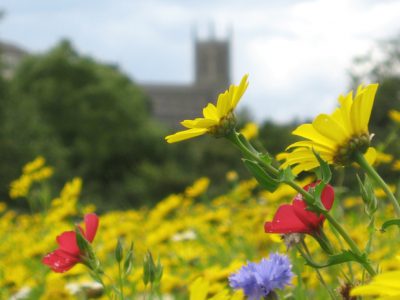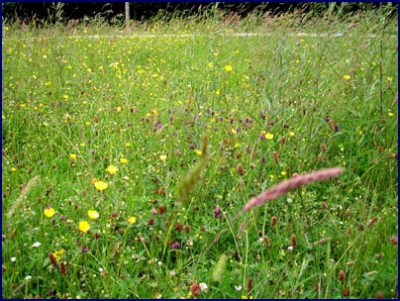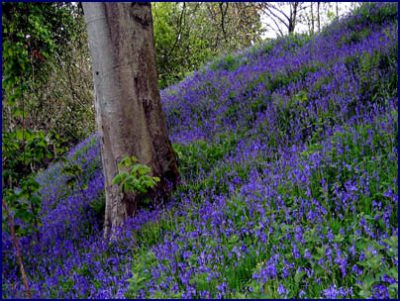Many people are aware of the benefits of flowers in supporting wildlife. However, benefits to local species are even greater when native wildflowers are used.
 Wildflower species are worth preserving in their own right. But they also provide food and homes for insects, birds, and mammals – for example, wildflowers support pollinators, including bees, whose decline has been well documented in recent years. Wildflower planting schemes therefore provide an excellent way to support biodiversity while also creating a visually attractive flower display.
Wildflower species are worth preserving in their own right. But they also provide food and homes for insects, birds, and mammals – for example, wildflowers support pollinators, including bees, whose decline has been well documented in recent years. Wildflower planting schemes therefore provide an excellent way to support biodiversity while also creating a visually attractive flower display.
There is a wide range of different wildflower species that are suited to different local habitats. However, over the past number of years EcoSeeds has been working on a number of very successful ‘Wildflower Meadow’ projects using highly colourful seed mixes. These projects provide an opportunity to involve the local community, church groups and schools groups in raising awareness of the importance of biodiversity.
 A typical project usually consists of the following steps:
A typical project usually consists of the following steps:1. Initial site design – The best species mix for an area needs to be determined first. Meadows don’t have to be large but the bigger the area, the greater the benefits to wildlife. (For very large areas, it is important to get detailed advice on how best to establish and manage a meadow.)
3. Community workshops – Early in the spring, as the flowers are beginning to grow, it’s the ideal time to work with church and community groups, schools, etc. to talk about the purpose of the meadow. These workshops usually include a practical activity such as sowing seeds in trays. It is also a great opportunity to talk about how seeds grow, the benefits of wildflowers and other issues such as our responsibility to look after the environment. Often, younger groups are also asked to take part in a drawing competition, and the selected drawings are included in signs for the area.
 5. Meadow days – In good weather, when the flowers are in full bloom, a meadow opening day is a great way to raise awareness with much wider groups about the wildflower area and its purpose. Meadow days can include other activities such as BBQs, face painting, etc. and are a great time to unveil the signs and to thank the different groups that helped design and plant the area.
5. Meadow days – In good weather, when the flowers are in full bloom, a meadow opening day is a great way to raise awareness with much wider groups about the wildflower area and its purpose. Meadow days can include other activities such as BBQs, face painting, etc. and are a great time to unveil the signs and to thank the different groups that helped design and plant the area.
 New wildflower areas can be established in church grounds and can be used to demonstrate how a church is committed to taking environmental action. They can also provide a means for different denominations or faiths to work together with the common goal of creating a new area for the benefit of biodiversity.
New wildflower areas can be established in church grounds and can be used to demonstrate how a church is committed to taking environmental action. They can also provide a means for different denominations or faiths to work together with the common goal of creating a new area for the benefit of biodiversity.However, they also provide a great opportunity to look outside the church and to support other community groups and initiatives. Helping enhance the environment is something that can engage and unite groups which might not ordinarily associate with churches. Also, local councils and government agencies are often very keen to support projects on their properties that have the twin aims of helping biodiversity and involving the local community, especially if different groups are working in partnership.
For further information on wildflowers and for some examples of wildflower meadow projects please see the Case Studies page of www.ecoseeds.co.uk.
